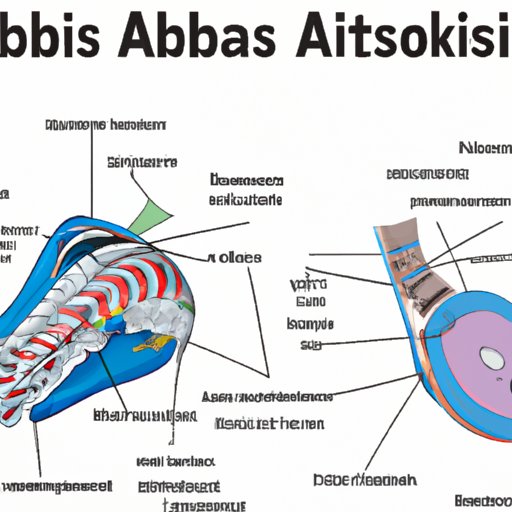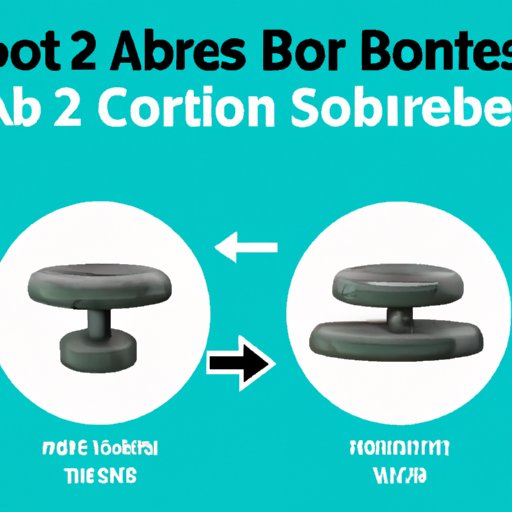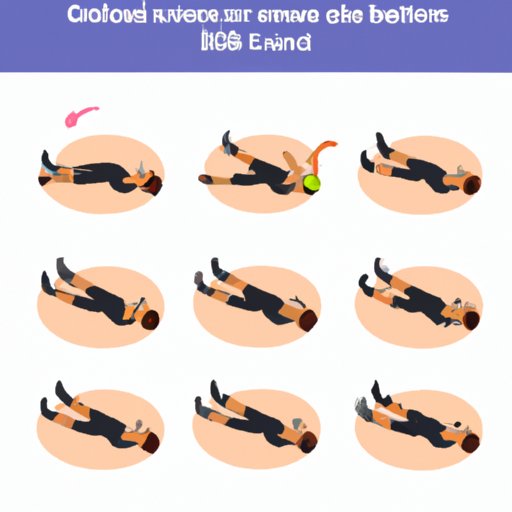Introduction
The abdominal muscles are some of the most important muscle groups in the body. They play a key role in supporting the spine, aiding in balance and posture, and providing stability to the entire body. Their importance can’t be overstated, which is why it is essential to understand how the abs work and the best ways to strengthen them.
This article will provide an overview of the anatomy of the abdominal muscles and explain how they work. It will also cover the science behind ab exercises, the importance of core strength and stability, and tips for building a six pack and toning your abs.

Anatomy of the Abdominal Muscles: Exploring How the Abs Work
The abdominal muscles are composed of four main muscles: the rectus abdominis, external obliques, internal obliques, and transverse abdominis. The rectus abdominis runs from the sternum down to the pubic bone and is responsible for flexing and rotating the trunk. The external and internal obliques run diagonally across the sides of the abdomen and are responsible for flexing, rotating, and stabilizing the trunk. Finally, the transverse abdominis runs horizontally across the abdomen and helps stabilize the spine and pelvis.
These muscles work together to provide stability and support to the trunk. When you perform an exercise that targets the abdominal muscles, such as a crunch or a plank, the muscles contract to help move the body. During these movements, the muscles must remain contracted in order to maintain stability and support the spine and pelvis.
The Science Behind Ab Exercises: Understanding How the Abdominal Muscles Function
Ab exercises involve contracting the abdominal muscles to move the body. This is known as concentric contraction, where the muscle shortens while creating tension. As the muscle contracts, it generates force, which helps propel the body forward. During this process, the muscle fibers shorten and the muscle becomes stronger.
In addition to strengthening the abdominal muscles, ab exercises also help improve core strength and stability. Core strength refers to the ability of the muscles to resist movement, while stability refers to the ability of the muscles to maintain proper posture. By performing ab exercises, you can develop core strength and stability, which will help prevent injuries and improve overall performance.

Core Strength and Stability: A Guide to Strengthening Your Abs
Core strength and stability are essential for maintaining proper posture and preventing injuries. To develop core strength, you should focus on exercises that target the abdominal muscles, such as crunches, planks, and leg lifts. These exercises will help engage the abdominal muscles and build strength.
In addition to strengthening the abdominal muscles, you should also focus on exercises that involve the entire body. These exercises include squats, lunges, and push-ups. By engaging multiple muscle groups, you can develop overall strength and stability, which will help improve your performance and reduce the risk of injury.
Building a Six Pack: An Overview of Abdominal Muscle Development
Building a six pack requires dedication and hard work. To achieve this, you need to focus on exercises that target the abdominal muscles, such as crunches, planks, and leg lifts. You should also incorporate cardiovascular exercise into your routine to burn fat and reveal the underlying muscle. Additionally, you should focus on eating a healthy diet that is high in protein and low in saturated fats and sugars.
In addition to these exercises, you should also consider incorporating resistance training into your routine. Resistance training will help increase muscle definition and size, which will help you achieve the desired six pack. Finally, you should make sure to get plenty of rest and recovery time between workouts to give your muscles time to repair and grow.

10 Tips for Toning Your Abs: Strategies for Effective Results
Toning your abs can be a difficult task, but with the right strategies, you can achieve effective results. Here are 10 tips for toning your abs:
- Focus on exercises that target the abdominal muscles, such as crunches, planks, and leg lifts.
- Incorporate cardio into your routine to burn fat and reveal the underlying muscle.
- Eat a healthy diet that is high in protein and low in saturated fats and sugars.
- Incorporate resistance training into your routine to increase muscle definition and size.
- Make sure to get plenty of rest and recovery time between workouts.
- Increase the intensity of your workouts gradually to avoid injury.
- Include core-strengthening exercises in your routine to improve posture and stability.
- Focus on form when performing exercises to maximize results.
- Track your progress to stay motivated and focused.
- Stay consistent with your workouts to see lasting results.
Conclusion
The abdominal muscles are essential for maintaining proper posture and preventing injuries. Understanding how the abs work and the best ways to strengthen them is key to achieving a strong and toned midsection. This article has provided an overview of the anatomy of the abdominal muscles, the science behind ab exercises, core strength and stability, and tips for building a six pack and toning your abs.
By following the tips outlined in this article, you can strengthen your abdominal muscles and achieve effective results. Remember, consistency is key to seeing lasting results, so stay focused and dedicated to your fitness goals!
(Note: Is this article not meeting your expectations? Do you have knowledge or insights to share? Unlock new opportunities and expand your reach by joining our authors team. Click Registration to join us and share your expertise with our readers.)
